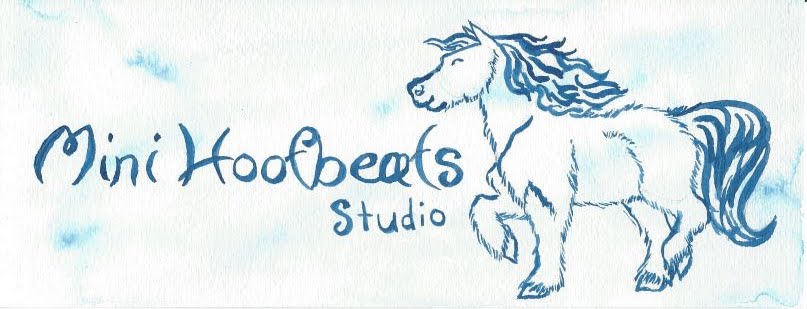The last in segment in the Horses and Ponies from the Celtic Regions Breed Studies Series is the New Forest Pony. They have been roaming in the New Forest in southwest Hampshire, England, since before the Roman invasion. The earliest documentation appear on Roman earthenware depicting horsemen approaching the Celtic goddess, Epona, the breeder of horses. These ponies remained in true form until around the nineteenth century, when the Thoroughbred and the Arabian were introduced to improve the breed. The first studbook was founded in 1910. Even though, they roam around like wild horses, most are actually owned by locals. There is an increasing number of New Forest Ponies being bred outside of England, in places such as Australia and Canada. They are used for the family, driving, many competitive English sports, Therapeutic riding, and for basic riding.
Their height ranges from 12hh-14.2hh. Their colors are predominantly Bay and Chestnut. Single Creams, such as Buckskin and Palomino, is allowed in the breed. However, Blue eyes are not desirable in the breed; so double Creams (Perlino and Cremelo) and Pinto patterns are not allowed.
Resources:
"International Encyclopedia of Horse Breeds" by Bonnie Hendricks
http://www.theequinest.com/breeds/new-forest/
https://www.petguide.com/breeds/horse/new-forest-pony/
https://www.redshoot-campingpark.com/ever-wanted-know-new-forest-ponies/#:~:text=To%20keep%20the%20breed%20pure,or%20cream%20with%20blue%20eyes.
Their height ranges from 12hh-14.2hh. Their colors are predominantly Bay and Chestnut. Single Creams, such as Buckskin and Palomino, is allowed in the breed. However, Blue eyes are not desirable in the breed; so double Creams (Perlino and Cremelo) and Pinto patterns are not allowed.
Resources:
"International Encyclopedia of Horse Breeds" by Bonnie Hendricks
http://www.theequinest.com/breeds/new-forest/
https://www.petguide.com/breeds/horse/new-forest-pony/
https://www.redshoot-campingpark.com/ever-wanted-know-new-forest-ponies/#:~:text=To%20keep%20the%20breed%20pure,or%20cream%20with%20blue%20eyes.

















































